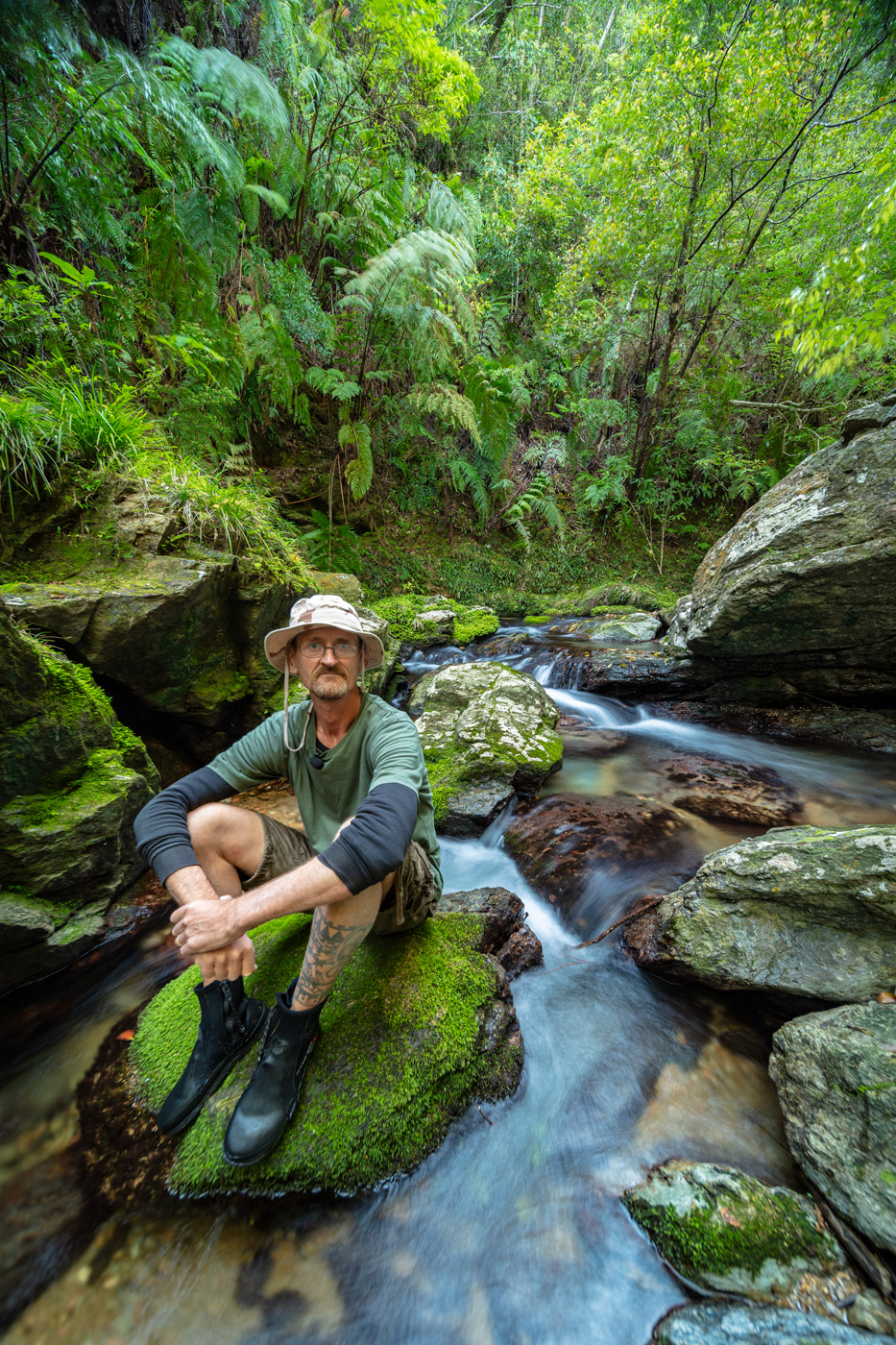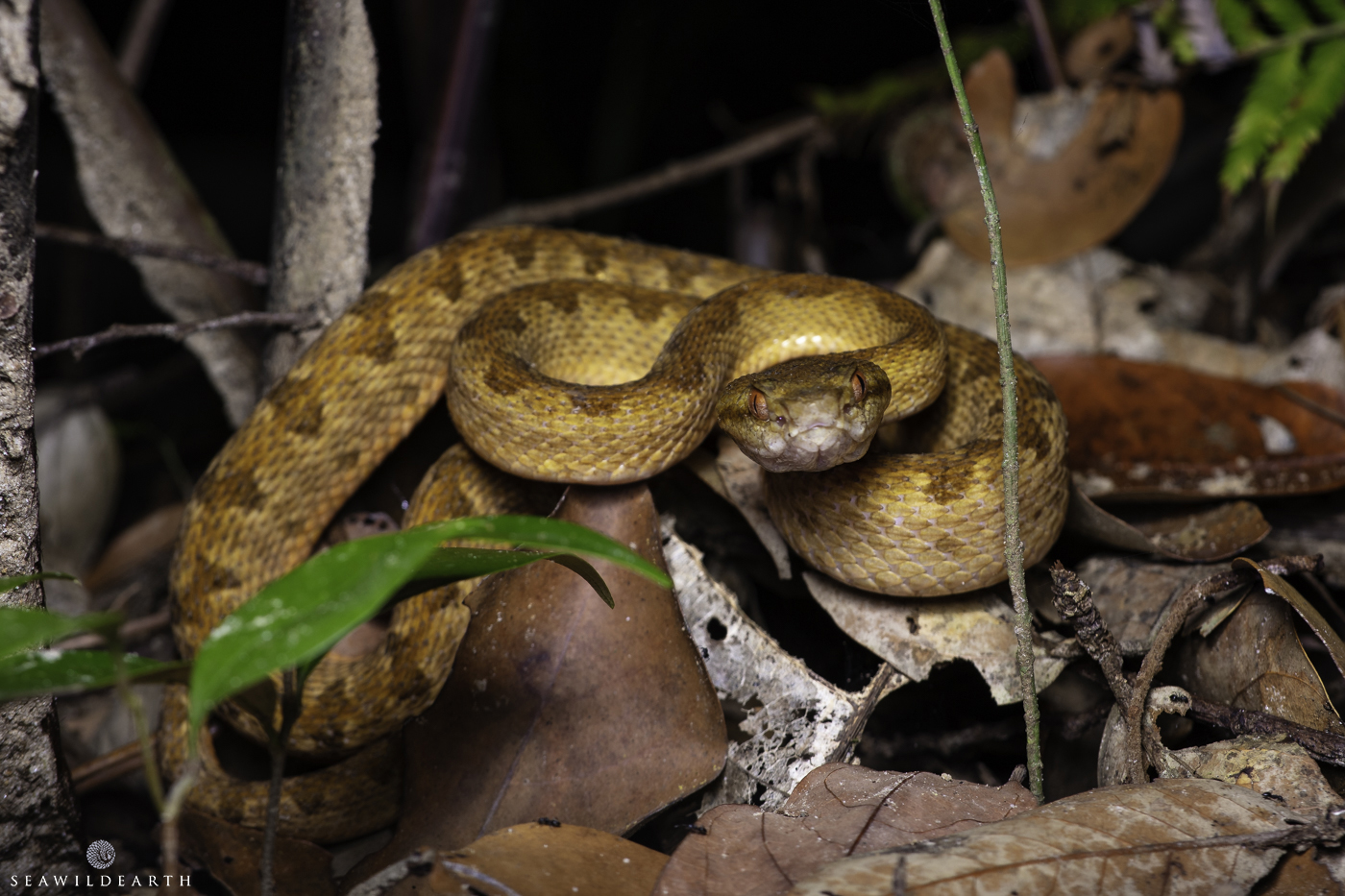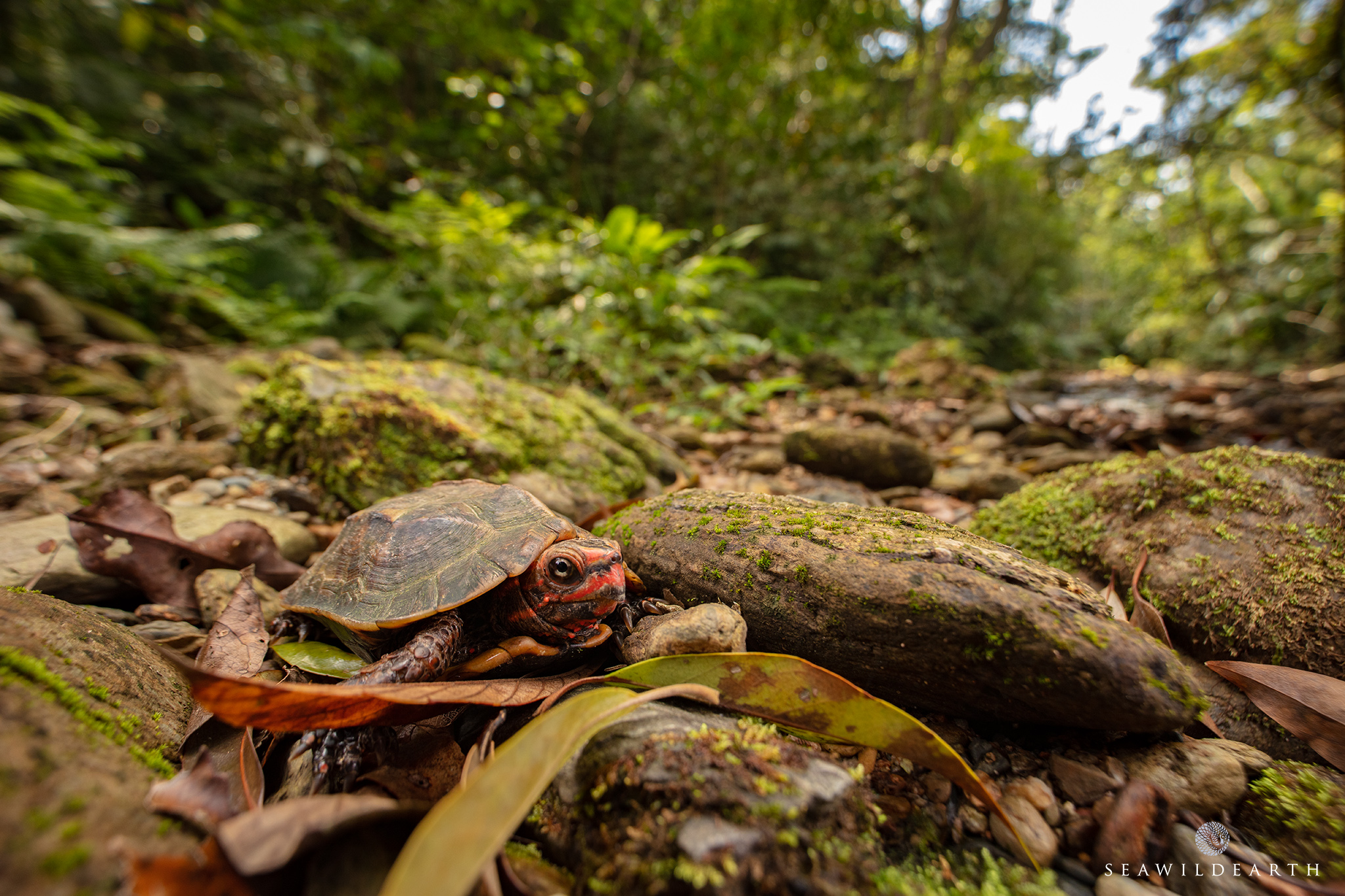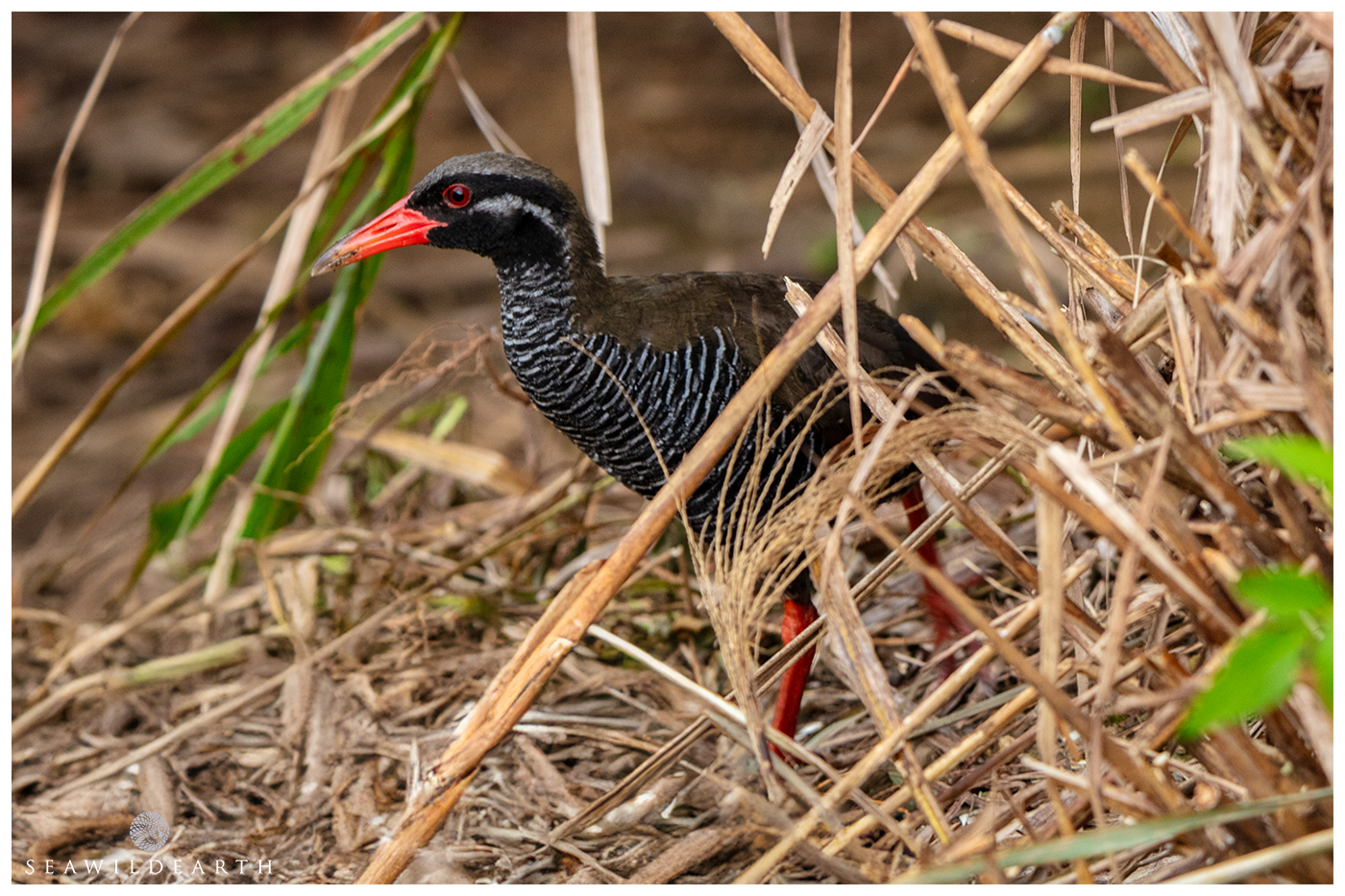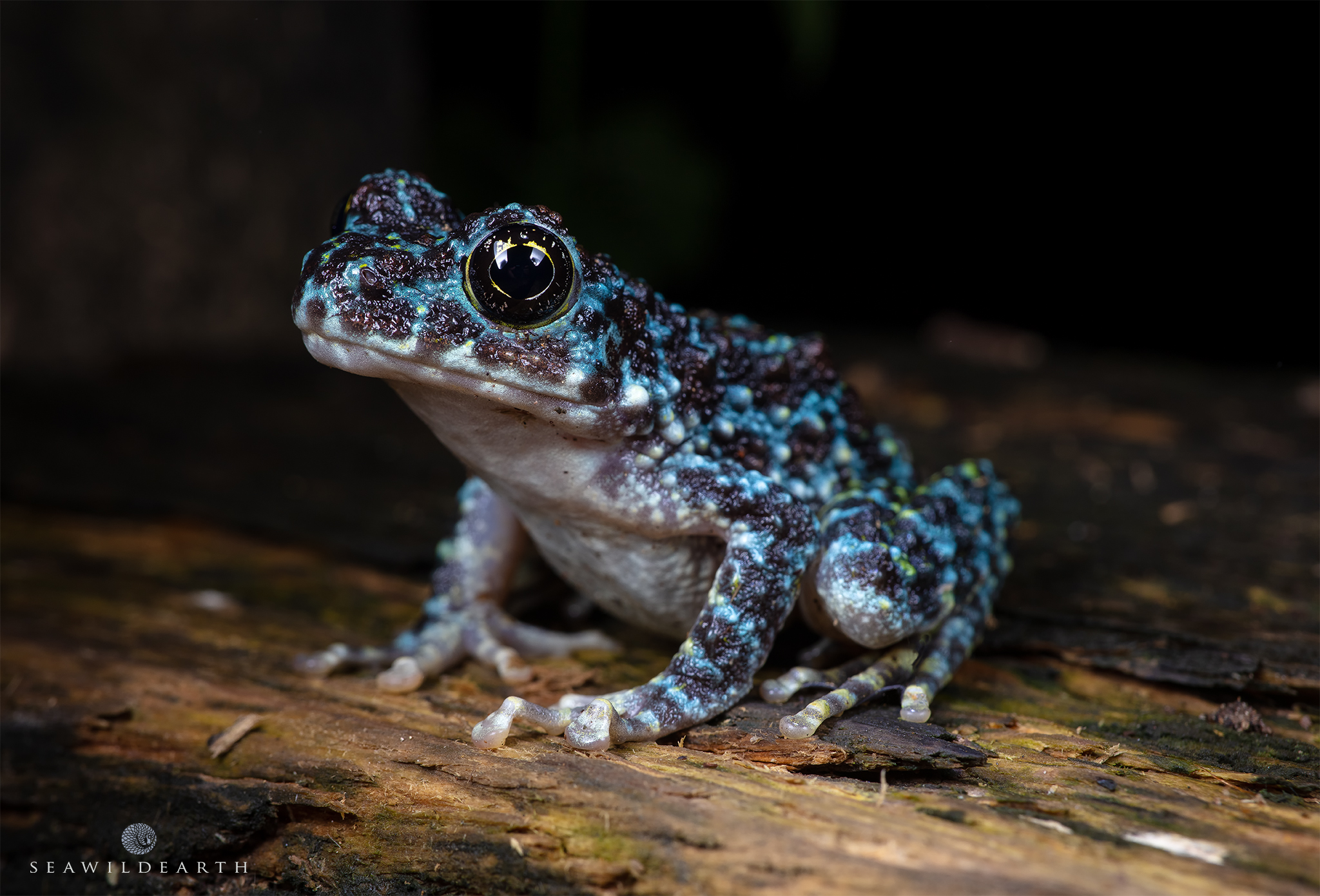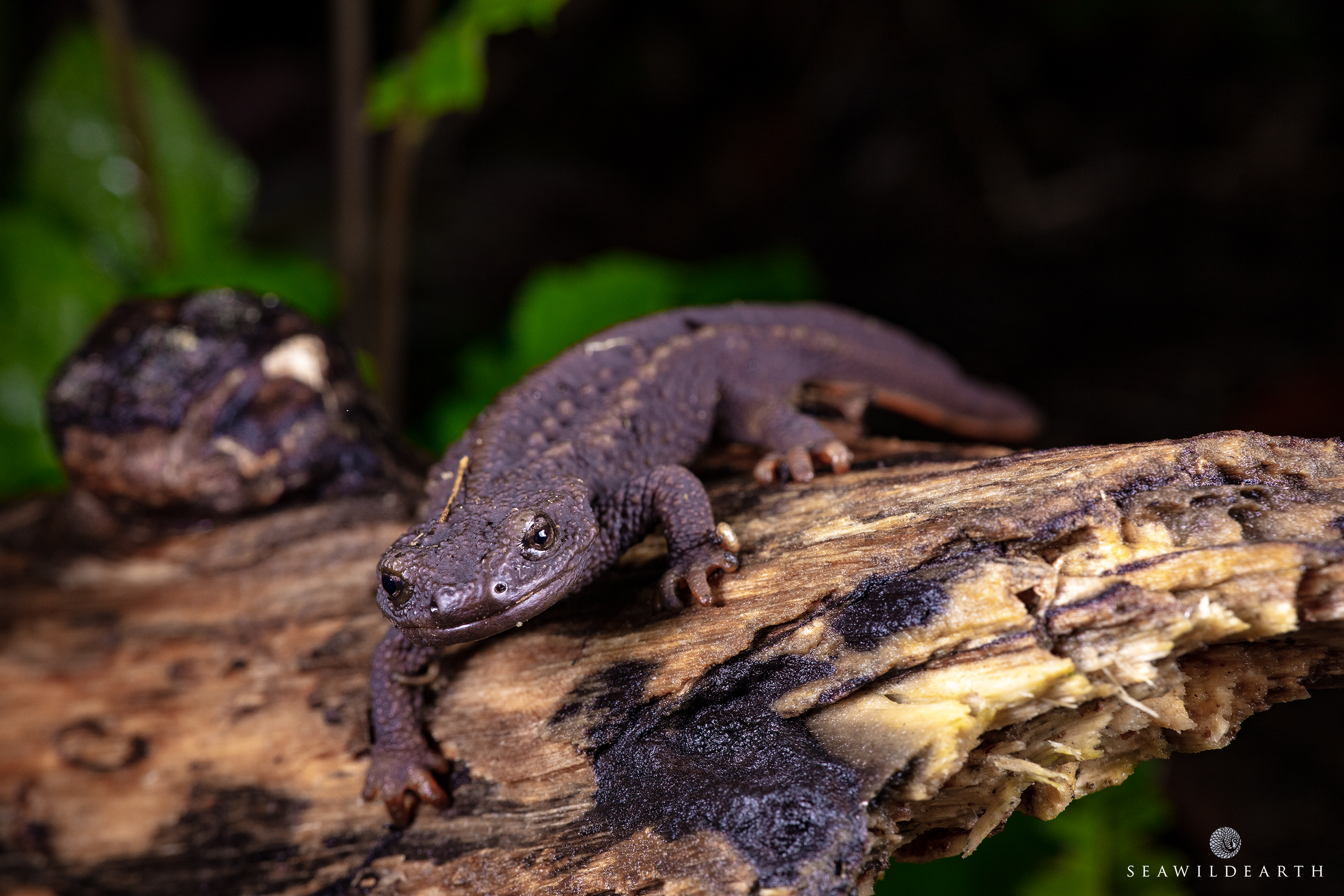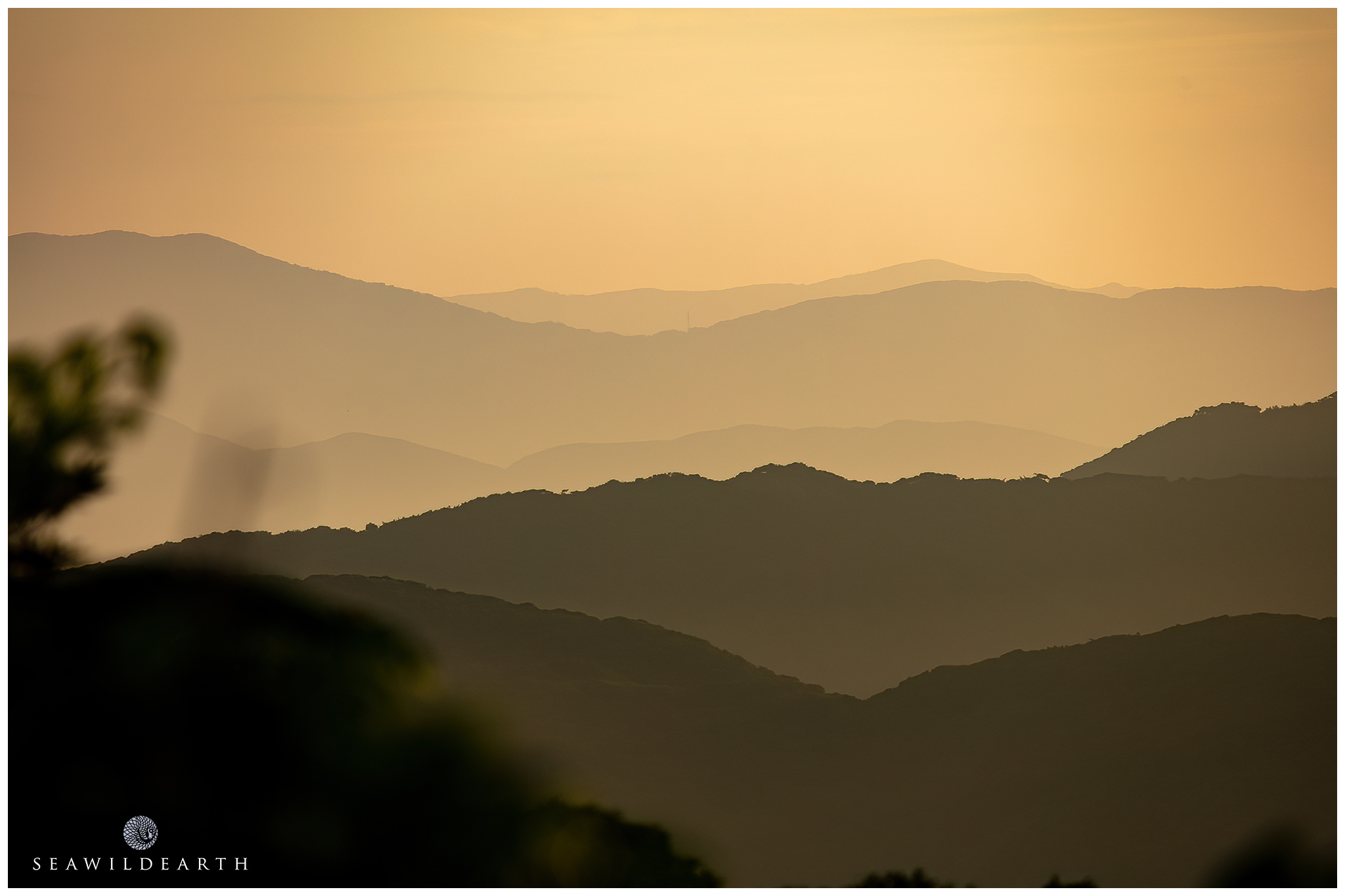4 Day Wildlife Experience Information and Itinerary
All the information and details for your planned wild experience here in Okinawa.
Hi there,
I'd like to start off by saying a big "Thank you" for choosing to spend your hard earned time with me on this wildlife experience here in northern Okinawa. Following is a selection of information that I feel is necessary to convey, along with a rough itinerary of activities for the four day experience you have selected. Having travelled far and wide for some twenty years, many of them engaged under commission by an international array of natural history production and broadcast concerns, I can definitely say that Okinawa truly is in a class of its own. Many of the species I will introduce you to during your experience are found nowhere else on earth. Some of them are sadly endangered as their populations dwindle, a few critically so. With the majority of the iconic species being either reptilian or amphibian it only goes to highlight the need to cover this first matter, the weather.
The Weather in Okinawa
The local residents have a saying, "If you don't like the weather in Okinawa, wait five minutes". Nowhere can this be any truer than here in Okinawa. Given that the island is sub-tropical it can, and often does, rain at any given time. All of this moisture keeps the island green and can, at times, increase the chance of certain species encounters. Andersons Crocodile Newt for example has a better chance of putting in an appearance during light rains or after significant rainfall. Other species prefer drier conditions. It's all just a matter of what environment is best preferred by each species. Significant rains in Okinawa are to be expected from the tail end of May and continuing through the month of June. It's what many call the 'rainy season' on the island. It's best to always pack a rain jacket as you never know when you may need it. Plan for the worst, hope for the best.
If attending this experience between July and November please note on the flips side to the above and understand that the days can get extremely warm and humid. During this time it is highly advisable to ensure correct hydration during the days. As a rule I normally consume about 3liters of bottled water in Summer months during such activities.
Another notification is also to be noted between the months of June and late November. This the typical typhoon season in Okinawa. These tropical storms can and often form very quickly prior to making landfall in Okinawa. If you are unfortunate enough to have one arrive during your experience days it will depend on the severity of the storm as to weather your experience will be cancelled or not. If it is cancelled a full refund will be issued. In all eventualities it is unfortunate if this happens but please understand that Mother Nature can be a hard task master at the best of times.
Fitness Level Requirements
While you are not required to be a professional triathlete to attend these experience days it is best to note that some of the walks have a duration of up to four or five hours. These are not forced marches but simply extended durations at a slow pace to see all there is to see during specific walks. Some of these walks may well also be in wet, stream easy flowing shallow river scenarios where small rocks will be encountered. Attendees need to have a level of confidence, balance and stamina to attend these experience days. Again to underline, you do not need to be some kind of special forces type but better also if this would be the only exercise you'd be getting after a year sat at a desk at home.
Potentially Dangerous Wildlife in Okinawa
Okinawa Island, while a tropical paradise, is also home to a variety of dangerous wildlife that poses risks to residents and visitors alike. Among the most notable are the Habu snakes, particularly the Okinawa Habu, whose venomous bites can cause severe pain, tissue damage, and, in rare cases, death. The island also hosts the venomous Box Jellyfish, which can inflict painful and potentially fatal stings to swimmers in the coastal waters. Additionally, Okinawa's warm climate supports a variety of other hazardous creatures, including the highly toxic Stonefish, and potentially deadly Cone Shells, both found in the shallow warm waters that surround the island.
On land poisonous Spiders, Millipedes, toxic snails, and even some vegetation can cause severe reactions if touched. While the island's lush environment and marine biodiversity are enchanting, awareness and caution are essential to safely enjoy Okinawa's natural beauty. In any case of negative interaction it is always best to seek medical attention as soon as possible. From our main area of focus on the island the nearest main hospital is located about one hours drive south in the city of Nago.
Please inform me if you have any specific allergies towards stings or medications so that I can make that mental, in the unlikely event, I need to make a medical report for doctors or medical professionals who may need to treat you during your time in Okinawa.
What to Pack
In order top prepare for the activities you will experience during your time here in Okinawa the following shortlist of items is advisable. Of course you can tailor this to your specific needs, and tastes, as required.
- Headlamp with backup. This will allow you a hands free experience should you be taking photographs or prefer to use a walking pole etc. Rechargeable power source is advised.
- Inclement weather clothing. A protective jacket, and pants if preferred, are advised to be carried. Rain squalls can happen at any time in Okinawa.
- Water resistant footwear. We will at times be walking in streams or rivers. Felt bottomed booties are available in Okinawa and are advised as a minimum requirement.
- Light cotton clothing. Fast drying light clothing for jungle environments are best. Rash vests are often a good investment.
- Sunhat for the summer months. Protection from direct sun is aways a good investment. On days around water environments reflections can also induce sunburn etc.
- Insect repellents and sunblock. Also any medication you may need of you have allergies to insect bites etc.
- Waterproof backpack or Drybag. Many excursions are in damp environments, if you have camera gear etc that you need to keep protected dry bags are a good investment.
- Cameras, Binoculars, Audio Recorders - Whatever your medium of fancy be sure to bring enough batteries, storage cards and cleaning gear as required.
Accommodation
For this experience I tend to suggest a homestay in the very northern area of the island in a village called Oku. This homestay is a quaint option run by an amiable character who also likes to have a drink of an evening with guests. Minshuku Miyagi is a rustic Okinawan option with rooms either with simple Tatami Mats on the floor with padded futons (mattresses) or indeed there are some rooms with standard western beds. This is not a very large property so it has limited capacity.
All meals are communal and are enjoyed at a communal table in the front of the property. Additionally all amenities such as bathroom, WC and Shower are also shared. There are other accommodation options in the region but none that also include Breakfast and diner. There are Hotel options in the village of Ogimi which is about a 45minute drive south of the region we will be predominantly investigating from a walking side of things.
At this point in time I do not have many photographs of Minshuku Miyagi but I will make it a point of taking a spin over there the ext time I am in the North to snag imagery for this information packet. It is important to note that this location is in the middle of the jungled northern confines of the island. There is limited cell coverage, there are bugs and mosquitoes. That said, it's cheap in the grand scheme of things, the showers are hot and the wildlife is on the doorstep. And did I mention the food is also pretty awesome?
Rough Itinerary and Experience Overview
I drive a small jeep vehicle that is good for up to two people as passengers. While this experience does not cover transportation costs I am able to offer such for a maximum of two attendees, as a couple or friends etc. Please be advised that of this is requested then a small additional fee of US$35 per person will be incurred to accommodate fuel costs that will arise for this option. If this is requested then I will also collect you on the date of your arrival in Okinawa if you are attending straight to the experience or from a location within Okinawa of you are already on island. I will then either drop you at the airport on your last day or at a point indicated within the main island of Okinawa should you be continuing your vacation in Okinawa once this experience has been completed.
Day 1
Afternoon - Evening
Collection for up to two people. Meeting at a to be determined pin drop whereupon we will then drive in convoy to the accommodation. We check into accommodation and get our gear sorted. Evening meals tend to be around 1800hrs/6pm and are of traditional local fare. No hamburgers or Pasta for the duration. Traditionally meals comprise of fish, rice and an assortment of vegetables with chicken and pork being meat options when available. Once eaten and our gear is ready we then look to depart on foot from the accommodation location which is located within a wildlife rich area of the very northern confines of the island. We return to base at around midnight depending on the mood of the group. Our Target species of the night is the Kuroiwa's Ground Gecko. This diminutive gecko is awesome in it's appearance as its eyes glow red with reflected light. An awesome little terminator like critter.
Day 2
Morning - Midday
Your first full day in the jungles of the region. You have options. We can opt to have a brisk dawn walk starting at around 0500hrs/5am to hear and encounter the dawn of birdsong in the jungles. We could even encounter one of the illusive Okinawa Rails, a flightless bird species, that are endemic to the island. Early mornings are also best times for encountering the Black Breasted Leaf Turtle. For those opting for a later start breakfast is normally served around 0730hrs/7.30am. Once satisfied we take a quick visit to the village store to snag a midday snack that will be stowed in our backpacks. Also enough water/liquid for the next five to six hours. From there again setting out on foot we strike out for a small river that will be our focus for the morning. Our goal is not distance but more a slow walk to appreciate the wildlife encountered. Expect to see Kingfishers, neon colored Mayflies, if fortunate Black Breasted Leaf Turtles and possibly a snake or two.
Returning to the accommodation before the heat of the mid-afternoon for some relaxation and prepping for the late afternoon and evening activities.
Evening Activity.
We start our evening off before sunset as we drive to a location where it is quite common to encounter the Okinawa Rail, or Yanbaru Kuina as it is locally known. This flightless bird is endemic to Okinawa and is found in small pockets of the Yambaru jungles predominantly in the North Eastern sector of the island. Just before sunset they come down from the jungles to look for areas of collected freshwater, and at a pinch seawater, where they will take a daily wash before heading back into the jungles to roost for the night.
If we are lucky and are fortunate to encounter the Yanbaru Kuina we return to the accommodation for the evening meal. Once we are ready and replenished we head out for the planned night walk. Our goal for this nocturnal foray into the Jungles takes us 20minutes drive South from our accommodation to an area that has high wildlife density with various creatures for potential encounter. These include what some call Japan's most beautiful frog, Ishikawa's Frog, which comes in two color varieties. More commonly they are encountered in a their green phase but more rarely do we also encounter specimens missing a yellow pigmentation thus leading to them displaying in a blue variation. Other than these Amphibians we have every chance to encounter Habu snakes and tree lizards. Our goal for this trek is to reach a marshy area deep in the jungles where numerous frog species congregate, and where frogs congregate, so do the frog eaters!
Day 3
Morning - Mid-afternoon
Again we start the day with an option for the early morning walk. Our goal for this walk would be to take a short drive to an area where heightened encounters with the illusive Pryers Woodpecker have been made in the past. We also run the risk of encountering Okinawa Rails, Black Breasted Leaf Turtles and the diminutive Ryukyu Robin as it flits between trees.
Returning for breakfast we then look to prep for the daytime activity which is a jungle river trek deep into the heart of the northern Jungles. For this we need our wet water shoes and jungle clothing as we will be getting wet and at times wading up to our waists, or chests depending on your height. Our objective on this trek is to simply enjoy being in the wilds but also to appreciate the topography of water features and narrow gorges. Wildlife in the area tends to be more serpentine and is a great location for spotting the most common of all Habu species, the 'Princess' or Hime (Him-Ayy) Habu as it rests up during the daylight hours.
Given this is a wet environment there is also the potential for encounters with Sword Tailed and Fire Bellied Newts. This trek can last up to six hours depending on the decisions of the group. It is a slow and deliberate excursion deep into the green beating heart of the Yanbaru Jungle. Meeting 'Ma Nature' on her terms. Returning to the accommodation in the early afternoon for a clean up and rest with a short excursion to the local tourist spot of Cape Hedo as an optional for the afternoon.
Evening
After a hearty meal we once again strike off into the jungle in search of Ishikawa's Frog, if we haven't encountered them until this point. If we have our targeted species will be the Ryukyu Odd Scaled Snake or 'Akamata' as it is called locally. This non-venomous species is abundant in Okinawa and has been said that it will in the right conditions devour Habu Snakes. As yet it is unknown if those tales are true and if the Habu in question are those that have fallen victim to road kill. Unmistaken due to their coloration the 'Akamata' must be one of Japan's most stunningly colored reptiles.
This trek starts off where our walk on the first evening finished. Thus we will be driving to the start point of this walk. Part of this trek will also include a foray into a river/marshy area so protective boots are strongly suggested. These can be bought locally for around US$12 if you do not bring your own pair with you. Other species potentially encountered on this trek will be Green Tree Frogs, Ishikawa's Frog, Okinawa Fishing Spiders, Okinawa Habu and if really lucky some Night Herons and Scops Owl. Any number of additional iconic species to Okinawa can also be encountered in this region which is known for its wildlife density and variety.
Our walk will continue into the dark hours as we are serenaded by the sounds of the jungle at night. The loudest sound will be the cadence of the Cicadas which is quite prominent in the Summer months. At other times the chirping of Katydids are the dominant sound. They are not loud enough to camouflage the rustling of leaves when reptiles, geckos and lizards are on the prowl.
Day 4
Morning
Our last sunrise in the Yanbaru. Starting the day with a stroll through a local wild area in the hopes to encounter Kingfishers, Black Breasted Leaf Turtles and the stunningly colored Tiger Beetles are the order of this pre-breakfast walk. Returning to the accommodation for breakfast and to pack our bags for check out. Once checked out we then drive south for some 40minutes until we reach the trailhead for a very picturesque waterfall area that is also home to one of the islands most stunning of all critters, the Andersons Crocodile Newt. If we are fortunate and haven't encountered them until this point we set out with the objective to try and locate them here.
For the adventurous this is a trek where you can also bring swimming attire and a towel as there is a nice swimming area at the base of this 35m high waterfall. This is not a tremendously taxing nor is it a long hike, probably some twenty minutes at a standard walking pace along a clearly defined walking track. We do however need to divert along a river to search for our target species in areas where most folks tend to avoid.
Once we are finished and have investigated the area it is time for departure. I don't put an end time on this as I don't personally like to feel rushed when out in nature. From here I am able to drop those who seek transport to the location of their choice or indeed to the airport in Naha if they are on an agenda to catch a departing flight.
Additionally if attendees have further days remaining in Okinawa I can drop them at their planned subsequent accommodation as required. I could also suggest the option to travel to nearby islands such as Yoron, Izena, Iheya and the Kerama Islands National Park if you have time. All of these are within a couple of hours Ferry ride from the main island, from various ports depending on the destination. Most have beaches to rival the Maldives along with crystal clear waters, amazing snorkeling and an abundance of Sea Turtles.
Additional Information
Wildlife Interactions - All wildlife encounters, bar none, are conducted in a strictly non-invasive manner. That is to say I do not, and nor do I permit others, to handle wildlife. As crazy as it sounds I do get folks wanting to handle Habu and other potentially dangerous wildlife. For me the joy of interacting with wildlife is to see it in it's own environment. Our presence is stressing enough for the animal let alone our attempts to coral it into a space that will permit us to handle it.
Unfortunately poaching in Okinawa is a big problem. Predominantly to provide to the illegal wildlife trade the species in Okinawa command a good price in illegal wildlife circles due to their uniqueness and limited numbers. I always ask folks if they are posting their imagery to social media to ensure they do not leave Geotags active on the imagery so as not to display the locations where the images were taken.
Flash Photography - Flash photography is permitted when recording still imagery or video lighting if needed. That said the key word here is respectful. I understand the desire to have as many pictures of an encounter as possible but if that encounter requires flash photography please understand the stress that multiple flashes in a short period of time may place the animal under. It is more than likely that we will encounter multi specimens of most critters so little by little with each encounter is often the best approach.
Additional pointers. If you have any firther questions on what to expect please reach out and contact me at your leisure via email. Please also note that this page is not linked on the main navigational toolbar for the website as it is a place where those who have either booked or are about to are sent for greater and in-depth information.
"Wherever you go, go with all your heart".
Confucius - Chinese Philosopher

